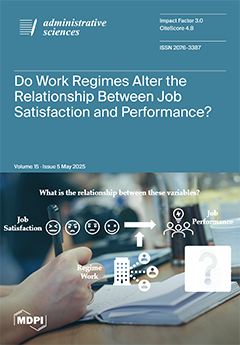Background: Work engagement is defined as a positive and fulfilling work-related state of mind, characterized by vigor, dedication, and absorption. High levels of engagement are associated with improved organizational functioning and a stronger sense of belonging among employees.
Objective: This study, conducted in
[...] Read more.
Background: Work engagement is defined as a positive and fulfilling work-related state of mind, characterized by vigor, dedication, and absorption. High levels of engagement are associated with improved organizational functioning and a stronger sense of belonging among employees.
Objective: This study, conducted in collaboration with a large metalworking company in central Italy, aimed to explore the relationship between work engagement and organizational cynicism among Maintenance Team Leaders. Specifically, the goals were to assess the levels of engagement and emotional involvement and to examine how these dimensions vary according to socio-demographic factors such as gender, age, educational background, and seniority. The ultimate aim was to support occupational physicians and workplace safety officers in identifying the best practices for preventing psychosocial risks, work-related stress, and burnout.
Methods: A total of 99 Maintenance Leaders participated in the study. The Italian version of the Utrecht Work Engagement Scale (UWES) was used to assess the three core dimensions of engagement: vigor, dedication, and absorption. Additionally, the Cynicism scale development by Naus, Van Iterson, and Roe was administered.
Results: While the sample size limits generalizability, the findings offer preliminary insight into engagement levels within this population. The results emphasize the need to expand the sample and to conduct comparative analyses across different teams within the company better understand engagement patterns and inform targeted interventions.
Conclusions: Although work engagement has been extensively studied in the healthcare sector, especially during the COVID-19 pandemic, limited research has addressed its role in the industrial context, and even less within the metalworking sector. This study contributes to filling that gap by providing an initial profile of engagement among maintenance leaders and by highlighting the interplay between engagement, cynicism, and individual characteristics in a high-demand industrial environment.
Full article





